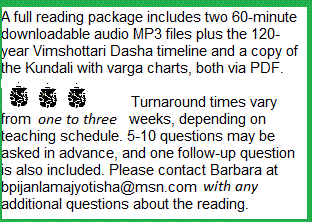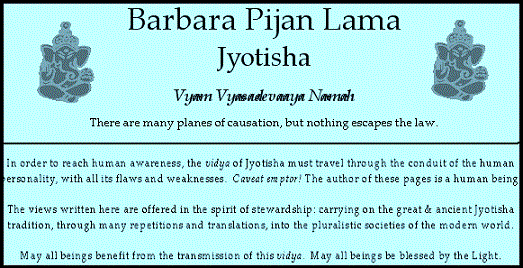
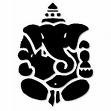
Vimshottari Dasha - Rashi - Gochara - Bhava - Graha - Ratna - Nakshatra - Amsha - Karaka - Varga - Bala

AUM som somaya namah
AUM hreem shreem chandraya namah
Learning Pathway
of
Relationships
Lifepartner
Profile
Narratives,
characteristics,
and Qualities
7th-from
marriage patterns
Comforted by Contracts
The bargaining, fair-minded, equity-seeking, negotiating, adjusting, arranging, balancing, pair-making Chandra-7 personality
tends to seek the companionship of a life-mate who displays traits that are active, physicalized, competitive, lively, innovative, inventive, birthing, moving, sporting, dynamic, pioneering, vital, and pursuing championship.
Tends to need a caretaker spouse who is one's stable nourishing parental defender protector.

-
LifeMate-1 (if any) = bhava-1
-
LifeMate-2 (if any) = bhava-8
-
LifeMate-3 (if any) = bhava-3
-
LifeMate-4 (if any) = bhava-10
EXAMPLES
-
Aquero 1844-1879 St. Bernadette Soubirous [revelatory-mysterious Pushya-4]
-
POTUS-pair-22-24 Needlework 1864-1947 Frances Folsom Cleveland [populist-profitable Varuna-3] = [vargottamsha]
-
POTUS-pair-34 Military Families 1896-1979 Mamie Doud Eisenhower [champion-competitor Pūrvābhādra-1] + [7, bargains] expert dancer
-
Swing Time 1911-1995 dance theatre Ginger Rogers [rhythmic-protective Pūrvābhādra-4] [7, balance, harmony, pairs]
-
India-PM 1917-1984 Martial Law Indira Gandhi [systematic-gridworked Vaishva-3] + + [Shani-1 parivartamsha Chandra-7]
-
Prodigals 1920-2007 writer-illustrator Ruth Bell Graham [householder-protector Pūrvābhādra-4] [7, marriage, covenant]
-
UK-Queen 1926-2022 Elizabeth-2 [doctrinal-dogmatic Aśleṣa-1]
-
Entertaining 1941- housekeeping Martha Kostyra Stewart [profitable-friendly Jyeṣṭha -3] = [ātmakāraka]
-
R-E-S-P-E-C-T 1942-2018 Queen of Soul Aretha Franklin [networking-friendly Arudra-3] [7, contractual relationships, harmony]
-
Zorro 1969- drama-commerce Catherine Zeta Jones [commercial-collaborating Pūrvābhādra-3] + [Pūrvābhādra-Somana-yuti-Rahu-Pūrvābhādra]
***
-
England-King 1491-1547 Henry-8-Tudor [economic-distributive Revatī-3]
-
POTUS-03 Declaration of Independence 1743-1826 Thomas Jefferson [financial-storytelling Śrāvaṇa-2]
-
Iran-Shah 1772-1834 Fat'h Ali Shah Qajar [defensive-ritualized Mūla-4]
-
POTUS-19 Railroad Strike 1822-1893 Rutherford B. Hayes [profitable-connected Kṛttikā-3] + [Somana-yuti-Guru] = [mūlatrikoṇa]
-
Germinal 1840-1902 J'accuse Emile Zola [status-hierarchical Revatī-Pashu-2] + [Revatī-Somana-yuti-Surya-Revatī] + [Revatī-Somana-yuti-Kuja-Revatī] + [Revatī-Somana-yuti-Budha-Revatī-nīcha] [7, relationships, arrangments]
-
Totem and Taboo 1856-1939 psychoanalysis Sigmund Freud [dramatic-displaying Mriga-1] = [mūlatrikoṇa] = [ātmakāraka] [Mriga-Chandra-yuti-Budha-Kṛttikā]
-
Savitri 1872-1950 revolutionary poet Shri Aurobindo Ghose [heritage-vocal Mūla-2] + [Shani-yuti-Chandra] + + [Chandra-7 parivartamsha Guru-2]
-
POTUS-34 Interstate Highways 1890-1969 Dwight D. Eisenhower [governing-regulatory Arcturus-2]
-
POTUS-37 Watergate 1913-1994 Richard Nixon [theatrical-demonstrating Dhaniṣṭha-1]
-
USA Civil Rights 1929-1968 Rev. Martin Luther King [rhythmic-protective Pūrvābhādra-4] [7, bargains, alliances]
-
USA-Sen-Utah 1947- finance Mitt Romney [political-demonstrating nīcha-Anuradha-1] + [Maitra-Guru-yuti-Chandra-Maitra-nīcha] + [Maitra-Guru-yuti-Ketu-Maitra]
-
Publisher 1960-1999 attorney JFK-Jr [secretive-disguising Dhaniṣṭha-4] + [Dhaniṣṭha-Somana-yuti-Ketu-Varuna]
-
UK-Duke 1982- William Wales [hierarchical-ordering Arudra-2] + [Mriga-Surya-yuti-Chandra-Arudra] + [Arudra-Somana-yuti-Rahu-Puna] [7, reciprocal relationships]
LifeMate-1 (if any) = bhava-1
usually one arranges a predominantly caretaking marriage
the emotional focus of the union is protection of one's own personality, mobility, integrity, physique, and social identity.
Classic marker of the two-person career.
Lifepartner-1 = competitive, energetic, kinesthetic, pioneering, and seeking championship through engagement with the primal life force. Their primary identity is grounded through direct action and movement (1).
Conditions of the first marriage are often framed by narratives of bhava-1 , such as i nnovation, new birth, core identity, sport and muscularity, pioneering action, physical appearance, propulsion, championship, speed, and vigor.
Spouse-1 may be physically attuned, dynamic, winning, personality-identified, forward-moving, competitive
Chandra-7 = constitutionally the marrying-type. The comfort zone is relationship-oriented, and one feel a deep, defining need to be engaged in active partnership.
Chandra-7 = Generally, identified as the caretaker of the primary union.
Soma's emotional outreach to the Other indicates their protective, symbiotic, balance-seeking habit . When matrikaraka Chandra occupies 7, the primary relationship in life is the bond with the mother. The lifepartner is usually a person with uniquely distinctive, easily recognized personality attributes, which may be increased via graha in bhava-1.
The union itself is comforting to the local folks [Chandra] who may find their ethnic practices equably reflected in the allied presentation.
Naturally, graha in 7th-from-Chanrda may very much adjust the outcome.
The first life-lifepartner for Chandra-7
The lifepartner = identity-provisioner, who provides Chandra-7 with
- a secure identity,
- a par
- tnership-promoting physical appearance
- a relatable personality
- a unique attribute-package that is socially recognized via the alliance
- a coherent vitality which is energized by the pairing
- active movement that coordinates with the union,
- individual presentation which harmonizes with the contractual agreement,
- a mineral-body-form that expresses the trust of the covenant.
Lifepartner-1 functions primarily as a source of physical vitality and confirmation of one's own life-force existence.
LifeMate-1 = typically one's well-wisher. Partner = responsively emotionally dedicated to the care-and-feeding of the marriage and its estate. However, the life-mate is also typically, an independent personality who grants the much-sought married-status identity to the Learner .
Chandra-7 nativities want the primary partner (7) to be a Mother-Protector (Somana). The need [Chandra] may be expressed as "mother to my children" or "mother to me". Whether on-demand nurturing and flowing support are primarily provided for the spouse, or primarily for the children, the leading role of the lifemate is distinctively parental and protective.
Chandra-7 needs to function primarily as as caretaker-mother, generating habitual rhythms of family life, nourishment, and shelter.
After the children are born or after the shared nest is fully established, the habitual nature of the union may indicate a predisposition toward non-sexual but comfortable, reliable, and affectionate connubial arrangements .
6th-from-7th offers = constitutional challenges, predisposition toward accusation, disappointment, disagreement, or distrust
Chandra-7 alignment. Often a persistently harmonious partnership due to one's emotional committeemen to the union.
If there are misalignments of expectation in this marriage, profile detail regarding the spouse's mental or behavioral imbalances may be garnered from examination of the
6th-from-7th-from-Chandra = [12th-from-Chandra]
For Chandra-7, that distinctively contentious bhava 6th-from-1st = roga-bhava-6 = ailments, debts, divorce, distrust, accusations, wars, medications.
Depending on the behavior of any graha located in bhava-6, disagreement within the union may arise on matters such as maternal relatives (6 = 3rd-from-4th), betrayals, disputes, treachery, broken promises, military actions, slavery, litigation, pollution, or crimes.
EXAMPLE
Zorro 1969- drama-commerce Catherine Zeta Jones [commercial-collaborating Pūrvābhādra-3] + [Pūrvābhādra-Somana-yuti-Rahu-Pūrvābhādra]
-
on the one hand, financially and professionally, peak success. However, that success comes at a stress-price. During Ketu Mahadasha, CZJ took a several-years-long break. Although her performance skills = high demand, there was an urgent need to reduce an unmanageble stress load which had triggered an underlying cycle of mood dysregulation [bipolar].
-
Entertaining 1941- housekeeping Martha Kostyra Stewart (Jyeṣṭha ) expressed deep grievance at her husband's request for a divorce following decades of marriage. The displeasure of divorce (6) was compounded by the toxicity of betrayal when his multiyear affair with his administrative assistant was presented during litigation (6).
Not only does LifeMate-1 care for any children produced by or brought into the marriage; LifeMate-1 is also more of a caretaker shelterer and nourisher for Chandra-7, and rather less of a sexual equal. Sexual engagement tends to be softened and steadily reduced by the preference for maternal-parental protection and acceptance from the mate.
Naturally if other graha yuti Chandra and particularly Ketu-yuti-Chandra-7or Rahu-yuti-Chandra-7, then the dynamic changes. However, abasic agreement (often entirely subconscious) that LifeMate-1 is primarily a parent to the Learner and only secondarily a sexual partner is typically present even with the complexities of other graha residing in bhava-7 .
Mother = Peer Adviser and Primary Partner
Chandra-7 not only seeks parenting from LifeMate-1 . Chandra-7 also forms a primary life partnership with the Mother [Chandra] and this primary partnership may be the strongest most supportive relationship in one's life. Much depends of course upon the disposition of Chandra.
When Chandra-7 is strong and nourishing by character, the Mother serves as the primary partner. Chandra-7 may be free to not marry, or Chandra-7 may delegate child-nurturing duties to LifeMate-1 while carrying on the primary collaboration and discourse with the Mother rather than with the spouse.
EXAMPLE
Iran-Shah 1772-1834 Fat'h Ali Shah Qajar
-
= said to have had 1000 wives. During his 62-years of life, the Supreme Ruler fathered a stupendous number of children. His first son was born at the Shah's age 16. His widowed mother was an important figure of the royal court. His harem of wives included slaves and princesses alike. They were given palace rooms in which to raise his children but he chose no primary spouse or empress. [Mūla] Chandra-7.
From a husbandly-companion perspective
Generally, ahusbandly-companion born with Chandra-7 is seeking a replacement for his dear mother. First, he seeks a caretaker for his children, and then, as the husbandly-companion ages, he is seeking a caretaker for himself. While he remains healthy and agile, his eyes may wander. However home and hearth are important to him, and he makes highly public (7 = 10th-from-10th) his devotion to his marriage and the spouse-partner.
Should the spouse-partner be a naturally caretaking type, such as one born in a Nakshatra of Chandra , then this husbandly-companion finds his fortune as he will be sheltered, supported, protected, and nourished in a motherly style for so long as he may live, with indiscretions pleasantly ignored so that family interests may remain secured. Much depends upon the unique characteristics of Chandra.
Outcome depends significantly on graha in bhava-1 and condition of the lagnesha. Spouse hails from an environment which emphasizes The earthen body and appearance , such as athletic competition, hunting, fashion modeling, actor-model, dance, hair or costume stylist, body-worker, massage, sports trainer or coach.
Also celebrity personality, political icon, or symbolic representative of a movement, idea, product, or group.
Spouse has a well-developed body image, with which the Learner identifies psychologically. Strong emotional connection to the spousal appearance, and native comfort derived from attachment to the marriage status. Spouse is a vital and attractive container of the life force; heroic; iconic; and hot.
Spouse is concerned with Self, appearance, health and musculature, physical appeal, personal identity, and social validation responding to one's physical presentation.
Native is more concerned with interactive harmony, love-making, negotiating agreements, and various emotionally comforting interactions. Relationship is natural and basic.
LifeMate-1 is an agent of competitive action and vitality. One with Chandra-7 typically marries a sporting, moving, lively mate.
The state of being married to LifeMate-1 brings physical recognition to the Learner = 7th-from-7th-from-lagna= Self.
Bhava-7 is a crux of any nativity being both 10th-from-10th social-national dignity and 4th-from-4th parental-local roots.
When the classroom of Professor Chandra is located in bhava-7, the student is born with the need to protect establish a routine [Chandra] of married life, maintain a wide range of social and cultural agreements, and nourish all types of relationships.
Presuming that there is no disruption in bhava-1, every success in married life may be expected. Chandra-7 the Accommodator feels a need to maintain harmony above all; thus one would rarely if ever speak or act in an unpleasant fashion. The first spouse enacts the feelings of the Chandra-7 native.
Naturally, the prognosis must be adjusted according to the lord of 7th-from-Chandra and any graha residing within bhava-1. One essentially marries to obtain a more vital, more vigorous mirror of the self.
-
UK-Queen 1926-2022 Elizabeth-2= marriage to her sporting, stalwart UK-Duke-Edinburgh 1921-2021 Philip Mountbatten has anchored her social identity for many decades. The union endures because many interpersonal factors are in alignment. One factor = her Makara indriya-lagna places her husband's Aśleṣa Chandra within her bhava-7, so that her marriage to him is both socially and emotionally anchored. Bhava-1contains [uchcha] Mangala, plus partly-[nīcha-bhaṅga] -Guru in parivartamsha with her gainful Shani-11. Of course, the Prince Consort's malapropisms can be matched to her Mangala-engine driving the nichha Guru. In a sense, as the agent reflecting her Moon, he represents what she feels.
Psychic Precursors
The first marriage is emotionally triggered and subconsciously sustained by evocative parallel-life memories of 7th-from-7th = bhava-1. One psychically anticipates an emotionally vital, active, dynamic 1st-marriage partner.
First life partner comes equipped with the traits necessary to develop the expected qualities of social identity, physical body appearance, musculature; sports, hunting, dance, competitions, movement, vitality, birth; physical body head, skull, brain, blood.
Natural adversaries of LifeMate-1 bhava-1 * one's servants and one's secret knowledge
The shad-ashtaka karaka for kalpa-bhava-1
- 6th-from-1st = bhava-6 = servants, physicians, medicines, litigations, military, ministers of service
- 8th-from-1st = bhava-8 = romances of the mother, secret relationships, confidential or hidden information, in-laws of the marriage, disasters, sudden and unexpected changes
The karaka role-players of 6 and 8 can be expected to behave less comfortably toward the life-mate.
LifeMate-1 may look toward one's servants, physicians, and medicines as enemies. Bhava-6 = 6th-from-7th-from-Chandra-7 * accused or enemy of LifeMate-1 . Bhava-6 = also [12th-from-Chandra] -7 indicating a drain upon one's litigation, accusations, toxicity, and pollution. Thus the physicians and drug-providers become energy drains (12) upon the Learner 's ability to maintain fair contracts and these same agents receive the criticism of LifeMate-1 (1).
Active, vitality-seeking LifeMate-1 's criticism (6) toward Chandra-7's addictions or exploitations can increase Chandra-7's existing proclivity to constantly re-medicate and re-argue the treatment plan for various maladies and diseases. Naturally, the conflict scenario becomes more exaggerated if there are strong graha residing in bhava-6.
Denizens of bhava-8 * 8th-from-1st such as mother's lover or children's schoolteachers as well as spouse's family can also exhibit an unexpectedly transformative, eruptive, or upheaving effect upon the LifeMate-1 . Whereas spouse-1 may perceive one's servants, physicians, and medicines as adversarial to the vitality-seeking interests of spouse-1; the in-laws, the mother's lover, or other agents of hidden assets may themselves view spouse-1 as adversarial their interest in maintaining secrecy. Naturally, the scenario becomes more dramatic if there are strong graha residing in bhava-8.
If there is a second marriage, the second spouse (8) sees the first spouse (1) as an enemy because LifeMate-1 -bhava-1 = 6th-from-bhava-8.
Spouse
Chandra-7 partner indicated through Bhava-1, has distinctive qualities of physical orientation And emotional independence .
Chandra-7 develops bodily vitality (according to Chandra's rashi and co-tenants) and seeks to gain social attention . The spouse may seem adolescent due to deep self-focus .
Partner = an important part of one's experience of owning and managing a physical body, and creating one's social identity.
Second Spouse presents a growth-challenge to craft a balanced relationship
2nd spouse, if any, is indicated through Bhava-8. The second spouse has mysterious, apocryphal, hidden qualities. The second spouse may choose not to reveal certain parts of his/her identity or activities.
Second spouse is an important part of one's experience of secret alliances, managing confidential information, and handling sudden, forced changes.
Additional spousal characteristics
derived from the rashi of bhava-1 = 7th-from-Chandra
Learning Pathway
Lifepartner-1 for [Chandra-7] + [Chandra-Mesha]
-
comforted by forward pursuit * settled into warrior rhythms * needs vitality
In addition to the fleshbody-identified and competitively active behaviors of bhava-1, include Shukra-ruled Tula - Vanika traits such as
- a need to stabilize contractual agreements
- naturally seeks peer-advising and equity-establishment
- culturally sensitive match-making and deal-making,
- intuitive balancing and brokerage,
- graciously sentimental musical and artistic tastes
- diplomacy and making of pleasant arrangements,
- defensive negotiating and bargaining,
- feels the soothing flow of trade exchanges,
- and a preference for harmonious equanimity within relationships - perhaps at the cost of honesty.
Naturally, graha residing in bhava-1 + bhava-7 can significantly influence the outcome.
Learning Pathway
Lifepartner-1 for [Chandra-7] + [Chandra-Urisha]
-
comforted by precious values * settled into rhythmic gathering * needs luxury
In addition to the fleshbody-identified and competitively active behaviors of bhava-1 spouse, include Mangala-ruled Vṛścika - Thriketta traits, such as
- penetrating insight,
- use of poisons as medicine
- invasive, evolutionary healing such as surgeries
- discovery and exploration, possibly forbidden
- drilling, plumbing, tunneling, mining, diving, plunging
- secrecy and mysteriousness,
- need for critical emergency experiences
- non-disclosure, camouflage, cover-ups,
- hidden assets / hidden knowledge, tantra
- need for initiation into into classified empowerments
and a preference for ongoing transformation within relationships - perhaps at the cost of knowledge containment or financial valuation.
The naturally neutral relationship between the Mangala-ruled partner and the Shukra-ruled self may supplement the qualities of the union. From the partner's competitive Kuja perspective, the sweets-seeker Shukra native is a pleasant addition to the environment. The uchcha Chandra native needs undulating, comforting sensual pleasures while the mate moves actively with and around the Learner .
Naturally, graha residing in bhava-1 + bhava-7 can significantly influence the outcome.
-
Totem and Taboo 1856-1939 psychoanalysis Sigmund Freud [dramatic-displaying Mriga-1] = [mūlatrikoṇa] = [ātmakāraka] [Mriga-Chandra-yuti-Budha-Kṛttikā] [7, relationships] SSF was married to Martha Bernays from his age 30 until his death age 83. MB tolerated her husband's many known extramarital affairs, including his decades-long liaison with her own younger sister.
She remained dedicated to him and his work, maintaining the secrecy [Vrishchika] of the data in SB's scientific notebooks which ensured earnings [Kuja-11] from his books.
-
USA-Sen-Utah 1947- finance Mitt Romney [political-demonstrating Anuradha-1] + [Guru-yuti-Ketu] while uttama-Rahu-Urisha occupies self-embodied bhava-1. [1969, age 21] MR married childhood friend Ann Davies; together, they had five sons. MR's [Chandra-7 + Guru-yuti-Ketu] suggests that the lifemate is a fertile and maternal, yet relatively passive figure. Ketu-7's disconnective nature links to the opulent treasuries of MR's outsized financial personality [uchcha-Rahu-1]. Although MR has followed a high-visibility public lifestyle via executive roles in public governance and corporate hierarchies, aDR has remained for the most part disengaged inside a luxury-privilege bubble. MR's lagnesha
9] suggests wifely partner identified with their institutional [Makara] Mormon faith [9].
Learning Pathway
Lifepartner-1 for [Chandra-7] + [Chandra-Mithuna] comforted by messaging * settled into rhythmic communications * needs mentality
In addition to the Earthenbody-identified and competitively active behaviors of bhava-1, include Dhanus - Haya traits such as
- global travel orientation and broad worldview
- identified with a doctrine, sacred belief, or credenda
- teaching-preaching of righteousness
- dogmatic and all-knowing
- sanctimonious and patronizing
- enthusiasm for wisdom-promoting, humanistic figures and causes
- and a preference for relationships that are defined by ideological or theoretical principles
Naturally, graha residing in bhava-1 + bhava-7 can significantly influence the outcome.
Supplementing the qualities of the union, the unequal, naturally fraught relationship between the Budha-ruled native and the Brihaspati-ruled lifepartner.
From busy Budha's perspective, the great benevolent Brihaspati = a sama-graha neutral party. Budha-ruled-Chandra usually feels neutral therefore toward Brihaspati's territories. However, from Guru's perspective, busy-mind Budha is a more-than-annoying shatru-graha enemy.
The wide-scope comforts of the Dhanus-defined lifepartner who needs global humanism and a philosophical view may be less compatible with the narrow-scope comforts of the Mithuna native who feels soothed by planning activities, technical details, and office chat.
Naturally, graha residing in tanu-bhava-1 can significantly influence the outcome.
EXAMPLE
-
R-E-S-P-E-C-T 1942-2018 Queen of Soul Aretha Franklin [networking-friendly Arudra-3] [7, contractual relationships, harmony] First child born to ALF at her age 12, father uncertain, so that the only identity relevant to this union was her own [1]
Learning Pathway
Lifepartner-1 for [Chandra-7] + [Chandra-Karkata]
-
comforted by maternal soothing * settled into tidal rhythms * needs to protect
Makara is pre-eminently concerned with social reputation. Relationship conduct is incorporated within the overall behavioral framework of conformity to public expectations and achievement of social dignity.
Shani-ruled institutional conventional status-ranking Makara - Draco traits govern physical, kinetic, competitively active behaviors of bhava-1
- lawfulness, regularity, normalcy
- status-consciousness, seeks honorable mention
- concern with protocol and public propriety
- prefers to hold a fixed position within a ranked hierarchy
- pragmatism, common-sense, realism
- sobriety, politeness, dignity
- dislikes individualism, creativity, and exceptions to the rules
- requests respectful, conventional behavior within relationships.
Chandra-7-Karkata = s generally seeking a caretaker partner to shelter, nourish, and protect the total class-conscious lifestyle.
Naturally, graha residing in bhava-1 + bhava-7 can significantly influence the outcome.
Chandra-Shani relationship.
-
UK-Queen 1926-2022 Elizabeth-2 since 1947 enjoyed an enduring marriage to UK-Duke-Edinburgh 1921-2021 Philip Mountbatten. He exemplifies her Makara + 1 partner profile for 7th-from-Chandra-7. Prince Philip has maintained a respectful, conventionalized posture while performing the responsibilities of the hierarchical elite [Makara]. At the same time, he displays the individuality and athletic vigor of bhava-1. Lifepartner-1 in this case would not fully merge their identity into one's identity due to the empowered graha located in bhava-1: Her Majesty's [nīcha-bhaṅga] Guru-1 along with her high-profit [uchcha] Mangala-1 parivartamsha-Shani-11 represent a husband who is importantly and beneficially aligned with her, but nevertheless possessed of a notably distinct personality.
-
Aquero 1844-1879 St. Bernadette of Lourdes= Budha-Makara-Draco yuti [Shani-Makara-Draco] yuti Shukra-Makara all in bhava-1 personality while a steady, responsible Chandra-Pushya grounds bhava-7. An avowed nun, her primary lifetime relationship was with her mother and secondarily her siblings (Budha-Shukra-1).
Learning Pathway
Lifepartner-1 for [Chandra-7] + [Chandra-Simha]
-
comforted by creative display * settled into dramatic rhythms * needs attention
At the level of character, Chandra-Simha-7 is sensitive to the plight of those from impoverished or polluted homes [Karkata-6] One may serve as a lion-like advocate [7] on behalf of the victims.
Chandra-Simha-7 sentimentally needs to politically dramatize some narrative of domestic injustice [Karkata-6]. This noble courageous feeling to protect the vulnerable would be evident in both spouses.
Within the marriage alliance,
special considerations for the Rogesha
Chandra becomes the disagreeable, resentful rogesha. Structurally, an element of dissatisfaction is permanently present in the spousal conduct.
There is a strong preference for contractual relationships which maintain the rhythm of culturally familiar problems. Chandra feels the drumbeat of the ancestors.
Rogesha-in-7 produces an empathetic helper who is identified with a ministry of aid. The mate may have a medical-military or social-work profession which serves the disadvantaged. Rogesha Chandra naturally flows along the emotional currents of the victim-narrative [6] while one feels most allied to the masses-and-the-classes [Kumbha 7th-from-Soma].
Spouse’s life-agenda usually involves maintaining empathetic equity [Chandra-7] under contractually unjust relationship conditions [rogesha in 7].
The spouse may accept unbalanced conditions as culturally customary. Indeed, the spouse may continuously reinforce the habitually familiar feelings of marriage grievance.
Not only the spouse, but also One may feel most comfortable [Chandra] with resentment-based relationships that mimic the habitual injustices of the marriages of the mother-figures of the previous generation [Chandra feels the rhythms of the ancestors].
Bhava-1 lifemate = identified with the partner's Kumbha economic-systems personality [1]
In addition to the fleshbody-identified and competitively active behaviors of bhava-1, include Kumbha - Ghata traits such as friendliness, orientation to large social assemblies (such as rallies and parties) preference for economic gainfulness within relationships
Often impacted by the natural animosity of Shani-vs-Surya within the marital union, Chandra-Simha prefers bright intelligence, politics, drama, special exceptions, and center-stage roles. However, soberly serious Shani imposes lawful austerity upon 1 = physical appearance, attributes of personality, identity.
Shani wants a regulated system, has little tolerance for exceptions, entitlements, individual foibles, or special bright lights. Chandra-7's lifepartner represented by Surya's arch-enemy Shani = a work functionary identified with competitions, athletics, and bodily life. The Surya-ruled native (7) is often the center of attention in the 7-environments such as lawcourts, bargaining, brokerage, advocacy, attorney, trading, occult knowledge.
This pairing often supports political couples , with the 7-partner entertaining and making agreements while the 1-partner focuses on economically [Kumbha] oriented actions, mobility, and identity.
Naturally, graha residing in bhava-1 + bhava-7 can significantly influence the outcome.
Learning Pathway
Lifepartner-1 for [Chandra-7] + [Chandra-Kanya]
-
comforted by remedial aid * sensitive to logical argument * needs to help
Lifepartner = Meena indriya-lagna
LifeMate-1 = isolated, visionary, imaginative, clairsentient, and seeking seclusion. LifeMate-1 's primary identity is grounded through the fleshbody, its brain, and its empirically sensed appearance. The Lifepartner-1 may be a clairsentient creative.
Chandra-Parthya native = usually engaged in a ministry of service as a negotiator and deal-maker using the application of craft and technique. Chandra-Kanya may argue for re-arranging unfair contracts and unbalanced vows; particularly as an advocate for the unmarried.
In addition to the fleshbody-identified and competitively active behaviors of spouse, include Meena - Antya traits such as
- retreat into sanctuary seclusion,
- symbolic, visionary understanding
- prone to fantasy and imaginative development
- conceptually philosophical
- influenced by cetacean teaching
- may bridge clairsentiently with Other Worlds
- intuitive dreaminess,
- broad, multi-dimensional worldview
- may offer spiritualized guidance
- has a preference for withdrawal or social invisibility within relationships
Kanya-Meena polarity
Budha-Guru = Small-Big = Narrow-Wide = Data-Theory
interior to the Learner , reflected in the marriage dynamic
Add to the alliance, the unequal, naturally fraught relationship between the Budha-ruled Chandra-Kanya native and the Brihaspati-ruled lifepartner.
From Budha's perspective, benevolent Brihaspati = a sama-graha neutral party. Chandra-Kanya feels neutral therefore toward the Meena partner. However, from Guru's perspective, busy-mind Budha is a shatru-graha enemy.
The partner's body [1] may be Guru-ized large, even lumbering in girth. Partner may be so tolerant of diversity that factual accuracy is fades in importance compared to the grandness of the bigger scheme.
Chandra-Kanya needs detailed specificity. Frustrated by Guru's generalism, chandra-Kanya may seek the company of other detail-handlers such as secretaries, clerks, report-writers, fact-checkers, disambiguators, and information managers.
Yet, chandra-7 ultimately seek partner-as-parent. One returns again and again to the comfortable, familiar, soothing patterns of a caretaking, sheltering partner.
A tolerant, wide-scope Meena-defined lifepartnership offers expanding intuitive awareness and a compassionate view. Meena dreaminess may be less compatible with the narrow-scope preferences of Chandra-Kanya, who feels soothed by argumentative details and complaint. Nevertheless, despite Chandra-7 constant kvetching, the spouse = a stable nourishing defender protector.
Following perhaps decades of mismatched behaviors, the relationship may stablize. Prognosis for this alliance depends significantly upon the placements of Brihaspati.
Also, graha residing in kalpasthāna-1 can redirect the outcome.
Learning Pathway
Lifepartner-1 for [Chandra-7] + [Chandra-Tula]
-
comforted by ritual negotiation of agreements * sensitive to balance * needs to trade
Mesha indriya-lagna
In addition to the fleshbody-identified and competitively active behaviors of bhava-1, include Mangala-ruled Mesha - Aja traits such asinventiveness, impatience, and a preference for action rather than words within relationships
LifeMate-1 = competitive, energetic, kinesthetic, pioneering, and seeking championship through engagement with the primal propulsive force. Lifepartner-1 is often a sporting enthusiast. Primary identity of the Mesha-1 spouse is grounded through direct action and vigorous movement (1).
Tula-Chandra-7 = a classic managing partner. One is emotionally focused on the rhythmically gracious balancing of relationships. The harmony-seeking adjustments of Tula are applied toward bargaining with the primary partner. Also one conducts agreement-seeking negotiation with many public and private alliances which develop over the course of a lifetime.
Naturally, graha residing in bhava-1 + bhava-7 can significantly influence the outcome.
-
POTUS-34 Interstate Highways 1890-1969 Dwight D. Eisenhower [governing-regulatory Arcturus-2] DDE's wife Mamie Doud Eisenhower was competitive social entertainer . MDE held dance parties that energized their two-person military-political career. Mamie declared her full singular commitment for the win = Mesha-1. Following the fearful restrictions of WW-2, dDE's presidency was very popular due to Mamie's physically invigorating parties, her love of bright colors, and her invitation to musicians of all races-classes-styles to perform their most boisterous, danceable music at the Whitehouse.
Learning Pathway
Lifepartner-1 for [Chandra-7 ] + [Chandra-Vṛścika-nīcha] * comforted by mystery * sensitive to trauma-healing * needs healing discovery
In addition to the fleshbody-identified and competitively active behaviors of bhava-1, include Vrishabha - Urisha traits such as artistic sensuality, acquisitiveness and a preference for luxury wealth within relationships
Urisha = sense-pleasuring, collecting, hoarding-and-herding, collector, breeder, warehouser, librarian, storage. Urisha-1's primary identity is grounded through values-fulfillment. Urisha-1 is often engaged in tangible acquisitions, historic collections, in genetic heritage, knowledge treasuries, finance, and arts. Bhava-1 = self-centric, active, innovative, forward-moving.
Vṛścika-Chandra-7 = focused on the unseen forces including undisclosed negotiations, healing arrangements, hidden diplomacy. Typically, chandra-7 is most comfortable when the spouse fulfills a protective, loyal, parenting role. As usual with the Chandra-7, the primary emotional partner may be one's mother, and the spouse may be most valued in their role as a parent to join children.
This couple may complement each other if treasury accrual is their shared interest. However, [nīcha] Chandra-7 = often deeply involved in the intense process of ongoing transformative emotional change and prone toward secret alliances. The partner must be able to accept a climate of secrecy in exchange for the pleasure-of-treasure benefits via the union.
Naturally, graha residing in bhava-1 + bhava-7 can significantly influence the outcome.
EXAMPLE
Learning Pathway
Lifepartner-1 for [Chandra-7 ] + [Chandra-Dhanus]
-
comforted by customary beliefs * settled into rhythmic received teachings * needs to feel wisely guided
Budha-ruled amsha may have partnering challenges due to spousal immaturity [adolescent viewpoint] and grievance narrative [complaining]. Check condition of Budha. .
In addition to the fleshbody-identified and competitively active behaviors of bhava-1, include Mithuna - Dvamdva traits such as
- skilled handcraft
- commercial business mentality, shopkeeping
- advertising, marketing, publicity, sales
- team-talking management
- narratives of coupling, sexual transaction
- detailed process administration
- superficial conversation on any topic
- scripted dialog, software programming
- radio, television, internet, cinema, magazine, book publishing
- verbosity,
- and a preference for easy sibling-like companionship and chatty shop talk within relationships.
Mithuna are media-messaging folk who excel in photography, presentations, and reporting. Any sort of clerical task or discussion topic is within their Budha-grasp.
Mithuna = a merchant, businessperson, announcer, communicator, administrator, writer, publisher, explainer. Mithuna-1= often concerned with physical embodiment, life-force energy, competition, direct action, and muscular vitality. Mithuna-1 takes a management approach to matters of birth, sport, movement, vigor, and innovative lifestyles.
The Mithuna Mate also adds a sibling-skill of cooperative verbal expression [Mithuna] into the partnership energy reserves, which eases collaborative discussion and teamwork within the alliance.
Dhanus-Chandra-7 = often focused upon matters of theory, belief, or higher understanding, albeit the perspective is emotional not intellectual. A global humanist, chandra-Dhanus needs large scale viewpoint integrated with Somana's routinized, localized, customary sensitivities. Chandra-7 finds comfort in partnership, equity, negotiation, agreement, and harmony. Chandra-7 may anchor oneself within a balancing practice.
As dhanesha-2, dhanus-Chandra-7 = values traditional lifestyles, historical knowledge, languages, sound, genetics, and food. The union is often focused on Mithuna-1's skilled communication regarding bodily vitality and competitive vigor, exemplified by their own appearance. Dhanus-Chandra-7 tends toward a parenting role within the relationship.
Naturally, graha residing in bhava-1 + bhava-7 can significantly influence the outcome.
Learning Pathway
Lifepartner-1 for [Chandra-7 ] + [Chandra-Makara-Draco ]
-
comforted by hierarchy * sensitive to class-status * needs ritual ordering
Karkata indriya-lagna
In addition to the fleshbody-identified and competitively active behaviors of bhava-, include Karkata - Kadaga traits such as
- a need for secure household and familiar routines,
- intuitive nurturing of the vulnerable,
- caretaking, gardening, farming, fishing
- dedication to parenting, protecting,
- moralistic primary teaching
- shelter providing and defensive
- local roots in the place of settlement, environmentalist
- stable habits follow ancient rhythms,
- and a preference for customary, home-based lifestyle within relationships
Typically, one born with Chandra-7 is seeking and needing a parental, caretaking partner. The couple may tolerate significant interpersonal imbalance so long as one feels protected, sheltered, naurtured, and emotionally secure. When Chandra activates the Karkata indriya-lagna, the mothering, soothing qualities of the mate achieve a continuous, salient importance.
Karkata = householder, defender, gardener, parent, caretaker, environmentalist, steward of the land. Kalpasthāna = vitality, attributes of personality, nobility. Karkata-1 takes a protective approach toward matters of embodiment, athletics, competition, championship, conquest.
The Karkata Mate also adds a security-and stability orientation [Old Pathways Karkata] into the partnership energy reserves, which eases co-parenting and property ownership-stewardship within the union.
Makara-Chandra = often focused upon social-status, lawful order, and hierarchies, albeit the concern is emotional not intellectual. Comfortable in roles = elite positions atop ranking pyramids, such as regulator, governor, legalist, law-upholder, order-imposer, director. Chandra-Makara needs dignified social achievement integrated with Somana's soft, routinized, localized, customary sensitivities.
As ruler-of-1, chandra = emotionally attuned to the world of the lifemate's identity (1). Chandra-7 finds comfort in acts of negotiation, balancing, harmonizing, deal-making. Makara-Chandra-7 may anchor oneself within a security-seeking practice of adjustment, accommodation, bargaining.
Karkata-1's habitual orientation to self-propulsion may combine with Makara-Chandra-7's emotional need for brokerage and relationship-building. Karkata-1 tends to be parentally protective + actively moving and self-referential. The union is often focused on Karkata-1's need for innovation and physical progress, while Chandra-7-Makara often takes a role of loyal partner who is deeply invested in the well-being of the mate.
Often a dedicated couple, able to withstand external vicissitudes due to their mutual devotion.
Naturally, graha residing in bhava-1 + bhava-7 can significantly influence the outcome.
EXAMPLE
POTUS-37 Watergate 1913-1994 Richard Nixon [theatrical-demonstrating Dhaniṣṭha-1] + [7, alliance, relationships, deals]
-
RNM married Pat Ryan Nixon in 1940. The couple operated a classic two-person career. Pat said that she thought Dick was vulnerable to criticism that she felt a need to protect him. She emphasized his profound patriotism [Karkata]. Delivering a colossal number of stump-speeches, pat spent years defending RMN's moral character.
-
During the 1950's, the Nixon marriage was showcased as a picture-perfect union based in secure homelife [Karkata]. Observers noted that PRN's steady, maternal presence [Karkata] seemed to counterbalance RMN's aggrieved and accusing hair-trigger. Chandra-7 = RMN's emotional need for his sheltering mate. RMN was inconsolable at Pat's funeral.
EXAMPLE
India-PM 1917-1984 Martial Law Indira Gandhi + + [Shani-1 parivartamsha Chandra-7]
-
on 26-Mar-1942, against the wishes of her family, ING married the Parsi political activist Feroze Khan Ghandy. FG became a nationally known legislator [Shani]. Although they lived in separate homes, there was neither divorce nor scandal. Their shared focus remained public responsibilities and governance order. Their partnership had many separations due to Shani. When the marriage completed one Rahu cycle (18 years) FG died, and ING did not remarry.
Learning Pathway
Lifepartner-1 for [Chandra-7 ] + [Chandra-Kumbha] comforted by friendship * sensitive to mass-participation gridworks * needs marketplace connection
Difficulties related to Chandra's rulership of 6th-from-7.
Intimate partnerships that operate emotionally on the Simha-Kumbha axis can be intensely oppositional. They must contend with the mutually incompatible shatru-graha agendas =
- (6) Shani's responsible, systematic, economically oriented Kumbha paradigm
- (12) Surya's self-important, radiantly confident, inherently political, attention-demanding Simha paradigm.
Due to this pattern-clash, combined with Chandra ruling 6th-from-Chandra, Kumbha-Chandra nativities may experience growth-challenges in the realm of agreements, trusts and treaties, and alliances.
In childhood, the Chandra-Kumbha partner may have been expected to display community networking skills, economic pragmatism, and sensitivity to the needs of the group. The Simha partner may have been the adored jewel of their parents' or grandparents' eye (Simha adored) to whom the group served mainly as their audience.
In addition to the self-referential, physicalized, innovating behaviors of bhava-1, Simha - Leya emotional traits such as
- self-reflexive behaviors, self-dramatizing
- brilliant creativity, gambling-games,
- delight in children, romantic ideals
- solipsism, general narcissism, entitlement
- celebrated uniqueness, exceptionalism, certainty, charm
- poetic genius, fashionable, political
- and a preference for holding the theatrical center of attention within relationships.
The Simha Mate = a brightly charismatic, politically intelligent personality. To help determine the mate's level of radiant confidence, find one's own placement of Surya.
Kumbha-Chandra = often focused upon matters of collectivity, economics, and social distribution systems, albeit the concern is emotional not intellectual. Kumbha-Chandra = comfortable in roles such as community activist, large-group events coordinator, and fundraiser. Ghata-Chandra = needs friendly connection and social networking to be integrated with Somana's soft, routinized, localized, customary rhythms
As vyayapati-12, chandra = emotionally attuned to the world of interiority, sleep, and quietude. Albeit, matters of 12 such as research, meditation, and clairsentience and claircognizance are often fraught due to 12-Karkata = 6th--from-7. Kumbha-Chandra-7 may anchor oneself within a security-seeking negotiating practice, often in a social-progressive context. Yet matters of the bedroom and secluded spaces can be frustrating, and one may feel grumpy about that.
Simha-1's habitual orientation to physicality, movement, and innovation may combine with Kumbha-Chandra-7's emotional need for relationship-building. The union is often focused on Simha-1's need for creative, political styles of personality and identity, while Chandra-7-Kumbha often takes a caretaking, parental role in the relationship. The relative strengths of Surya-and-Shani should be consulted.
This pairing can support marriages in which the Simha person is comfortable with receiving celebrity attention while the Kumbha person is a devoted partner of the main attraction. Both partners require significant independence and time apart.
The 1-mate is typically a sports-player, model, dramatic figure, or bright personality. The 7-native may specialize in deal-making, advocacy, legal representation, within a scientific, populist, or futuristic context.
Naturally, graha residing in bhava-1 or bhava-7 can significantly influence the outcome.
EXAMPLE
POTUS-pair-22-24 Needlework 1864-1947 Frances Folsom Cleveland
- married POTUS-22-24
Grover Cleveland
in 1886. [FFC age 21]
[GC age 49]
Typical of Chandra-7,
FFC maintained a deep and
constant relationship with her mother. Lawyer GC had been a close friend of her
lawyer father's. Due to her husband's elder-age, GC remained a father-figure in Frankie's life.
Typical of Chandra-Kumbha, her husband was a famed politician [Simha]. However, by marrying GC in the Whitehouse, Pūrvaphalgunī Frankie also became an instant celebrity. Frankie's social entertainments were considered pleasantly populist [Kumbha] She was credited with rescuing her husband's formerly-muddied reputation.
EXAMPLE
POTUS-pair-34 Military Families 1896-1979 Mamie Doud Eisenhower [champion-competitor Pūrvābhādra-1] + [7, bargains]
-
[MDE age 19] married 25-year-old first-lieutenant Dwight D. Eisenhower in 1916. With Guru-Simha-1, mamie entered their two-person career with optimism [Guru]. She famously declared, "I have one job, and that is Dwight Eisenhower." Intent on promoting her husband's career, expert-dancer Mamie threw legendary musical parties [her Yoni lagna].
-
... DDE's star ascended from an obscure military command to the peak global visibility of Supreme Allied Commander, then POTUS-34 -- due largely to Mamie's political networking. Until their Whitehouse term, the couple rarely lived together due to DDE's secret assignments [Guru rules 8 + Chandra rules 12]
-
Hidden affairs and distancing pushed them to the verge of divorce several times, but the tolerant Guru-Simha-1 preserved their union for the sake of DDE's political career.
EXAMPLE
Publisher 1960-1999 attorney JFK-Jr [mysterious-undisclosing Dhaniṣṭha-4] [Somana-yuti-Ketu]
EXAMPLE
Zorro 1969- drama-commerce Catherine Zeta Jones [commercial-collaborating Pūrvābhādra-3] + [Pūrvābhādra-Somana-yuti-Rahu-Pūrvābhādra]
-
CZJ married the dramatist-businessman, Michael Douglas . 7th-from-Chandra contains [Magha-Shukra-yuti-Ketu-Aryaman] = MD's dramatic enactment career. However, Surya-Kanya-2 ruler of Simha reveals that the core of MD's entertainment career = producer roles, in which he supplies the financing [2, banking]. The couple grew into a HNWI affluent lifestyle.
Learning Pathway
Lifepartner-1 for [Chandra-7 ] + [Chandra-Meena ] comforted by ancestral guidance * settled into rhythmic intuition * needs contemplative sanctuary
Budha-ruled amsha may have partnering challenges due to spousal immaturity [adolescent viewpoint] and grievance narrative [complaining]. Check condition of Budha. .
In addition to the fleshbody-identified and competitively active behaviors of bhava-1, include Kanya - Parthya traits such as
- psycho-mental imbalance with digestive health issues,
- engagement with polluted or toxic environments,
- involved with medication and remediation
- patterns of betrayal or misconduct in contractual agreements,
- emotional instinct to help those in distress
- narratives of injustice, dissatisfaction, disagreement, or distrust
- need to complain about infidelity, exploitation, and involuntary servitude
- capability to professionalize in medical, military, and human-services
- and a preference for the role of service provider within relationships.
Naturally, graha residing in bhava-1 + bhava-7 can significantly influence the outcome.
EXAMPLE
England-King 1491-1547 Henry-8-Tudor [economic-distributive Revatī-3]
-
[HT age 18] married his elder brother's widow, Catalina de Aragón [her age 23]. Her job was to produce the male heir that would legitimize continuation of the royal genetic lineage (2). Catalina/Catherine endured many pregnancies rife with miscarriages and her health suffered. Only one female child survived.
-
The marriage endured for 23 years, and was accounted generally happy. Nevertheless, Henry was forced to demand a male heir. Eventually, there was a Kanya-style accusation-and-divorce on accusations of failed lineage-continuation. Unlike most of Henry's other wives, Quene Kateryn was never beheaded, and she never abandoned her argued claim [Kanya] to be the rightful Quene. The common folk [Kanya] loved her and she was widely honored as a victim of betrayal.
EXAMPLE - dedicated service, betrayal, compassion
Germinal 1840-1902 J'accuse Emile Zola [status-hierarchical Revatī-Pashu-2] + [Revatī-Somana-yuti-Surya-Revatī] + [Revatī-Somana-yuti-Kuja-Revatī] + [Revatī-Somana-yuti-Budha-Revatī-nīcha] [7, relationships, arrangments]-
May-1870 [EZ age 30] married Éléonore-Alexandrine Meley, a laundress. The couple were child-free. She was dedicated to EZ's well-being [7th-from-Chandra = 1, embodied personality]. After steadily caring for EZ's mother in their home, Éléonore-Alexandrine Meley worked diligently to support her husband .
-
Zola's [Varuna-Rahu-yuti-Shukra-Pegasus] [6] shows a fascination [Rahu] with servant-ladies [Shukra-6]. For years, he enjoyed a passionate affaire-du-coeur with their domestic-servant, which produced Zola's two "illegitimate" children. Although EZ profoundly betrayed her trust [Kanya service-work, betrayal] Éléonore-Alexandrine Meley eschewed divorce. After Zola's death, she allowed hiss bio-children to carry Zola as their family name.
-
Éléonore-Alexandrine Meley came from a humble background, Marriage to a national figure, whatever its flaws, gave her dignity and purpose. Although deeply victimized, Madame used her social empowerment with compassion. As Zola's only formally acknowledged widow [Kanya widowhood] EM admitted the controversial figure Dreyfus into EZ's funeral - attended by thousands. This single thoughtful action effectively corrected [Kanya] Dreyfus' undeserved disgrace.
EXAMPLE
Swing Time 1911-1995 dance theatre Ginger Rogers [rhythmic-protective Pūrvābhādra-4]
[Budha-Karkata] = [Budha in bhava-11] + [Pushya-Budha-yuti-Surya-Punarvasu]
- GR was married and divorced five times [Guru-yuti-Ketu] between her age 17 and her age 60. [Shukra-Singha-12]. Typical of Chandra-7, GR's primary support relationship = with her mother [Soma].
- Most of GR's alliances were brief; some of the marriages enduring for only a few months. Yet all of the lifemates belonged to her social network [Budha-11] of entertainers and media-people. Despite the many complaints and divorce lawsuits [Kanya] GR remained cordial friends with most of her ex-es.
- GR's five husbands and many of her romantic partners were communications media figures [Budha] such as actors, singers, script-writers, cinema producers. In their business [Budha] frequent socializing [11] and long on-the-road absences [Ketu] = the norm. In her Memoires, GR described the way that her lifestyle adapted to the promise-breaking [Kanya] sexuality [Budha coupling] and verbosity of show-business.
EXAMPLE
Prodigals 1920-2007 writer-illustrator Ruth Bell Graham [householder-protector Pūrvābhādra-4] + [Pūrvābhādra-Chandra-7 parivartamsha Aśleṣa-Guru-11] [7, marriage, covenant]
[Budha-Mithuna] = [Budha in bhava-10]
- Typical of Chandra-7, RBG's primary support relationship = with her parents [Soma]. Her public reputation [lagnesha-karmesha Budha in bhava-10] was largely defined-by her marriage to the internationally known Christian evangelist Hour of Decision 1918-2018 Rev. Billy Graham .
- Typical of Kanya, their union was unbalanced and unfair. With Rev. BG building the born-again business and rarely at home, RBG was left to function as the single mother with a large brood of children in a rural home [Kanya servitude]. Nevertheless, news photographers [Budha] created a hagiographic facade. Following decades of increasing health problems [Kanya] RBG predeceased her spouse.
EXAMPLE
USA Civil Rights 1929-1968 Rev. Martin Luther King [rhythmic-protective Pūrvābhādra-4] [7, contracts, alliances, advocacy]
-
MLK married the beautiful church-singer Coretta Scott King in 1953, his age 24. Shukra rules 2-voice-face-beauty. Even while MLK became a charismatic celebrity hero attractive to many, during their 15-year union, CSK she remained a dedicated helpmate [Kanya] to herr husband and his ministry [Kanya]
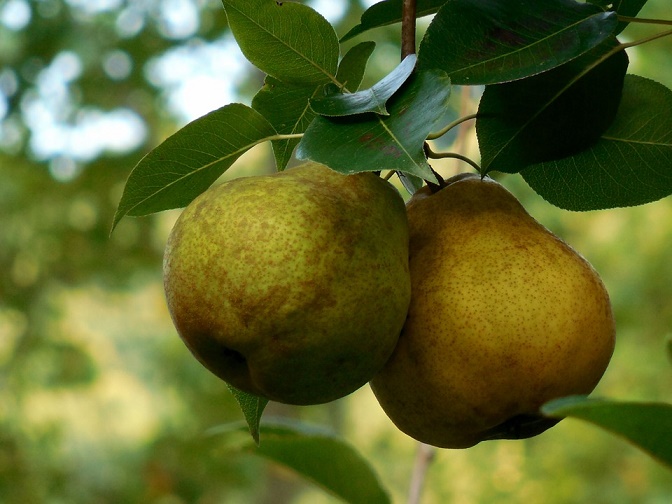
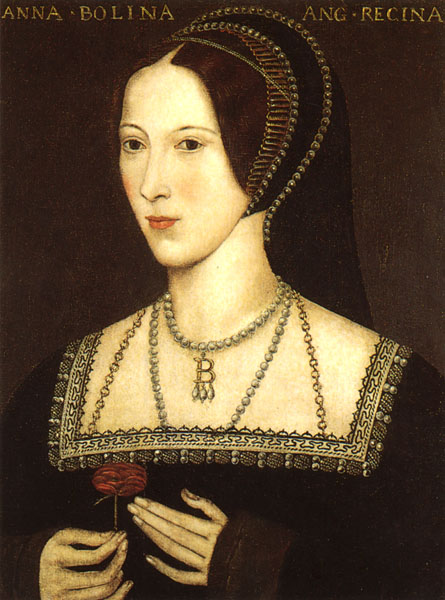
Anna Bolina was the mother of Queen Elizabeth-1. ++ the second wife of England-King 1491-1547 Henry-8-Tudor. Anna was beheaded on order of King Henry after she miscarried his male heir .
LifeMate-2 (if any) = bhava-8
Conditions of second marriage often follow a narrative of bhava-8, such as undisclosed assets, classified information or hidden relationships, influenced by the spouse's family (in-laws), oriented to discovery, trauma healing, disaster response, sudden unexpected identity changes, revolutionary events, eruptions of force, tax avoidance, and mystical initiations.
Lifepartner-2 may be secretive, confidential, tantric, rejuvenating, rebirthing, camouflaged, mystical, occult-focused, involved with surgeries, penetrating, exploratory, and undisclosing.
Life-partner-2 = mysterious, apocryphal, hidden undisclosed qualities. Life-mate-2 may choose not to reveal certain parts of one's identity. Life-mate-2 may mask certain activities. The spouse is an important part of one's experience of secret alliances, managing confidential information, and handling sudden, forced changes.
EXAMPLE Germinal 1840-1902 J'accuse Emile Zola [status-hierarchical Revatī-Pashu-2] + [Revatī-Somana-yuti-Surya-Revatī] + [Revatī-Somana-yuti-Kuja-Revatī] + [Revatī-Somana-yuti-Budha-Revatī-nīcha] [7, relationships, arrangments]
+ [Pegasus-Shukra-yuti-Rahu-Varuna] [6] +++ Zola's randhresha Mangala-7 + betraying rogesha-Shani-4, household
- Following nearly 30 years of childless marriage with his devoted wife Éléonore-Alexandrine Meley, EZ fathered two secret children with Alexandrine's domestic servant. = [Pegasus-Shukra-yuti-Rahu-Varuna] [6]
- The mother of EZ's late-in-life children, Jeanne Rozerot = 30-yrs his junior. Their affaire-du-coeur remained hidden [8] for many years.
- Wife-1 remained married to Zola, and continued to serve her husband's well-being [1] - which naturally safeguarded her own status.
- The children's mother was moved into her own dwelling, a carriage-ride distance from Zola's home with wife-1. He supported the family financially in a bourgeois style, enjoying visits and holidays with them, but did not reveal their presence socially.
- Photos show the children playing happily, nicely dressed, with their parents. Perhaps to avoid questions, they did not go to school. When Zola was exiled in England for 3 years, Jeanne and the children went with him. However, they never wed.
Transition from LifeMate-1 to life-mate-2
The first life-mate is represented by the self-identified, embodied, muscular-moving environment of bhava-1. The first life-mate has self-referential traits which may anchor marriage-1 into an ongoing state of supporting the spouse.
LifeMate-1 is predominantly an athletic, self-motivated, champion figure focused indeed on the personality of the mate yet operating mainly in the physical realm .
Lifemate-2 is predominantly a veiled person who remains undisclosed to the public. Lifemate-2 may be a healer or agent of transformation, one who manages hidden assets, or one who deals in catastrophe such as an emergency first-responder. This spouse requires camouflage.
Depending on graha in 8, there may be some overlap between the in-laws from marriage-1 and the second spouse.
bhava-8 = 2nd-from-Chandra-7. Emotionally, the second marriage indicates a significant upheaval and forced identity change (8) away from the spousally-centric marriage-1 and toward a new focus upon mystery, masking, sudden transformations, healing of trauma, and hidden assets. A peculiar feature of second life-lifepartner for Chandra-7 = the second spouse may be known by the in-laws because bhava-8 also represents the in-laws = family of first marriage partner.
EXAMPLE
POTUS-pair-22-24 Needlework 1864-1947 Frances Folsom Cleveland
-
wedding-1-of-2 with POTUS 22-24, Grover Cleveland. After GC's death, wedding-2-of-2 with an archeology professor from her undergraduate college, for which they were both governing-board directors. [Dhanus, higher-ed; 8, excavations] Typical of 2nd-from-Chandra-7, the professor was an obscure figure and the second marriage maintained a relatively low profile.
Depending on the presence or absence of graha in bhava-8, the second life-partnership may be vigorously exploratory and perhaps taboo-challenging. Everything depends upon graha in 8. If bhava-8 is unoccupied, the second life-partnership may be more quiet in its expression. Yet marriage-2 is clearly distinguished by the increase in secrecy and sudden unexpected changes.
Psychic precursors
Second life-partnership may be emotionally triggered and sustained by deep memories of 2nd-from-7th. Psychic anticipation of an emotionally secretive 2nd-life-mate.
The psychically anticipated environment of bhava-8 for the second life-partnership includes agency of bhava-8.
Life-partner-2 comes equipped with the traits necessary to develop the expected qualities of mysteriously sourced relationships, empowerment, and assets; hidden knowledge, confidential or privileged information; taxes and inheritance; emergencies, catastrophic change; tantric transformation; surgery, therapeutic healing, sorcery, conditions (not timing) of death; in-laws (family of LifeMate-1 ), the birth family of the first spouse; physical body internal sexual-reproductive and endocrine systemr.
Life-mate-2 associated with mystery and hidden assets. Emotional need for Secrecy in the second union.
Outcome depends very much on graha in bhava-8; Rahu-8 may indicate a mate-2 of a different social-cultural background; Mangala-8 may indicate that the second spouse is vigorously active such as an athlete, explorer or highly competitive in business (and perhaps prone to shouting); Shani-8 gives Mate of a lower caste or social class.
Ketu-8 may indicate disorientation or incoherence, and a tendency to disregard the Learner . Potentially disconnected or deranged.
The Mate could be involved in undisclosed or masked tantrik activities such as surgery, healing, magic, and management of emergencies or confidential information. May be involved in tax matters (8) or hidden assets.
Presuming that finance is going well, there is often a higher tolerance for infidelity within the second marriage of a nativity with Chandra in bhava-7, due to the secret-wealth qualities of bhava-8, which represents mate-2 as = 2nd-from-7th-from-lagna.
bhava-8 = 2nd-from-7th thus the lord of 8 can be a timing agent to indicate the death of Mate. Opportunity for widowhood in the 2nd marriage is stronger when the 8th bhava is populated.
EXAMPLE
POTUS-03 Declaration of Independence 1743-1826 Thomas Jefferson [financial-storytelling Śrāvaṇa-2]
-
married his first life partner Martha Skelton, the daughter of wealthy planters. Martha was a socially visible person, who gave career-boosting home entertainments to support her husband's leadership quest, while she managed their slave-labor planation home [Chandra]
-
After Martha's death enjoyed an enduring second lifepartnership with one of the house-slaves, who became his hidden lifepartner-2. The half-sister of his first wife Martha Skelton, the second lifepartner Sally Hemmings was socially veiled due to her quadroon status (having some portion of African slave blood).
-
The relationship remained masked as an unavowed companionship although Sally travelled to France with Jefferson and his daughter on extended diplomatic assignments (the race taboo was not present in France). Sally bore him six children.
-
Their mixed race children, like Sally, were not socially recognized until the era of genetic testing more than 200 years in the future. Children of 8 = invisible 12.
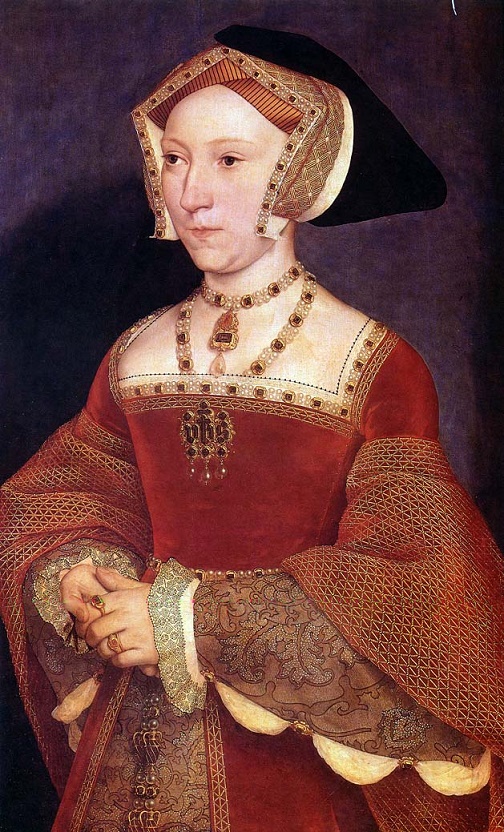
Jane Seymour, wife #3 of Henry VIII died following childbirth
en.wikipedia.org/wiki/Jane_Seymour
LifeMate-3 (if any) = bhava-3
Chandra-7 seeks in third life partner primarily the virtues of a manager, sibling-companion, and team-mate
The first spouse = busy, administrative, team-oriented, communicative
Activities of the third marriage are often focused into narratives of bhava-3 such as information management, writing, announcements, cohort, commercial business, ensemble performance, literacy and numeracy, documentation, programming, manufacturing, and articulated process.
Third spouse for Chandra-7 = partly via Sahaja Bhava-3. Partner-3 has distinctive qualities of communicative skill and team interaction. The third spouse develops cooperative, collaborative environments (according to Chandra's rashi and co-tenants) and has commercial interests.
Chandra-7 emotional relationship to partner-3 can be emotionally similar to the relationship to a younger sibling . While inclined to dote affectionately upon the third spouse, chandra-7 takes more of an elder sibling role.
Third spouse is an important part of one's experience of interactive narrative validation through talking, writing, hand-craft, and group mental process.
bhava-3 = also 8th-from-8, therefore by the principle of bhavat bhavam, there may be hidden threats, shocks, and trauma if bhava-3 supports sudden eruptions of force
EXAMPLE
England-King 1491-1547 Henry-8-Tudor
-
on 30-May-1536 married wife-3 Jane Seymour, only 11 days after decapitating his previous wife, Anne Boleyn. Rahu in 9th-from-Chandra sends ambitious and barrier-bending, taboo-twisting drishti to Henry's notorious wife-beheading Shukra-yuti-Ketu.
-
Henry was desperate for a son to continue his royal line. Jane did produce the son, but she died 2 weeks later. [Rahu-Vṛścika]
3] = reproductive organs. Quene Jane was said to have been conversational, oriented to courtiers, and gifted in handcraft. Her embroidery skills, crewelwork, and needlework were praised.
EXAMPLE
R-E-S-P-E-C-T 1942-2018 Queen of Soul Aretha Franklin [networking-friendly Arudra-3]
-
[ALF age 19] in 1961 Already the mother of two previous children [which denote two previous de-facto marriages] ALF married her manager and co-lyricist, Theodore White. Unfortunately, ALF was reputed to have suffered from her husband's physical violence while he additionally managed a prostitution ring. [Varuna-Budha-yuti-Ketu-Varuna]
3]
Life-partner-3 may be perceived as an agent of communicative skill-building, thinking, skills training, publications and announcements , small-business administration, and team activities. The relationship may have sibling-like qualities.
If bhava-3 is well supported by ruler and drishti, the Mate is a talker, writer, and frequent short-trip traveler, who assists in promoting Chandra-7 's media image and increasing one's self-made affluence. Due to the conversational qualities of bhava-3 = 9th-from-7th-from-lagna.
Third marriage is emotionally triggered and sustained by deep memories of 9th-from-7th = bhava-3
-
Third life partner comes equipped with the traits necessary to develop the expected qualities of siblings and close cousins; playmates; Talking, breath, words; one's own mental health, daily thought process, repeating conversations, the self-narrative; one's own self-made affluence; adult team-mates and work-group members; mother's younger sibling; writing; touch; physical arms, shoulders, hands
Emotionally communicative and commercially inclined 3rd-marriage partner
Swing Time 1911-1995 dance theatre Ginger Rogers [rhythmic-protective Pūrvābhādra-4]
RULER [Mangala-8 rules 8th-from-8, hidden information] [nīcha-Bharani-Shani-yuti-Mangala-Aśvini] + [Bharani-Shani-yuti-Rahu-Bharani]
Fabulous Publicity Photographs
- During WW-2, as American culture was changing and GR's popularity was waning, on 16-Jan-1943 [GR age 32 ] GR married USA-Marine and bit-part cinema actor, Jack Briggs
- The wedding was said to have been orchestrated by GR's mother.
- 9-yrs her junior, 23-yo Briggs looked dashingly handsome in his military uniform [Mangala-Mesha]
- fabulous [Rahu] photographs of the pair created the hoped-for boost of visibility for GR via a patriotic publicity stir. [3]
Although their union was very brief and expedient [Kuja-Rahu], the legal marriage endured 1943-1949 due to Shani--nīcha-8 deep resistance to change.
[GR age 32-39] Jack Briggs faded into camouflaged obscurity [8]. He had no other marriages with women.
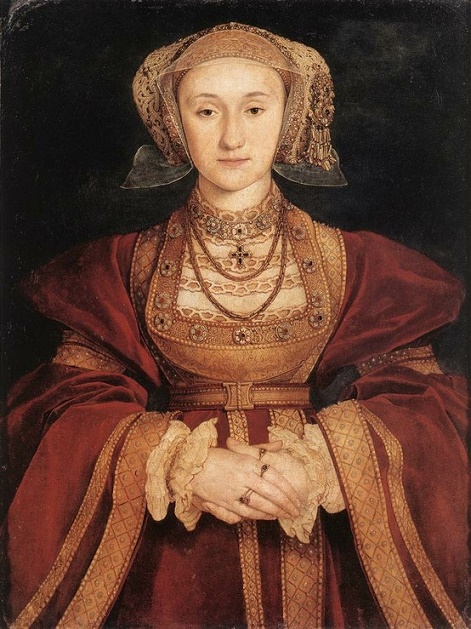
Anne of Cleves, the fourth wife of England-King 1491-1547 Henry-VIII Tudor
painted by Hans Holbein the Younger, year 1539-CE
en.wikipedia.org/wiki/Anne_of_Cleves
LifeMate-4 (if any) = bhava-10
defensive, culturally-rooted, seasonal-calendar, routinized, patriotic, ethno-nationalistic, comfort-seeking, home-loving, foundational, property-owning 4th-from-Chandra-7
When indicated by other multiple-alliance predictors, the fourth marriage may serve as the retirement marriage .
Emotionally anchored 4th-alliance = optimized for comfort, routine, security, nourishment, farming, protection, patriotism, schooling, and observance of the rhythmic seasonal calendar
Much depends upon the characteristics of any graha located in [4th-from-Chandra]
Conditions of the fourth marriage are often framed by narratives of bhava-10, such as social duty, seniority, leadership, and executive authority to make decisions on behalf of those in the lower levels of the hierarchy.
Fourth spouse for Chandra-7 may be socially responsible, high-visibility, dignified, recognized pin accordance with the qualities of karma-sthāna-10.
Partner-4 has distinctive qualities of public leadership and high-visibility recognition. The fourth spouse develops executive, social-ordering environments (according to Chandra's rashi and co-tenants) and has public social-reputation interests.
Chandra-7 emotional relationship to partner-4 can be emotionally similar to the relationship to a boss or governing supervisor. While inclined to dote affectionately upon the fourth spouse, chandra-7 is often seeking a respectable public facade and expecting the spouse-4 to make public decisions.
Fourth spouse is an important part of one's experience of public-figure narrative validation through managing the social aura and reputation process.
-
England-King 1491-1547 Henry-8-Tudor= Surya-yuti-Guru = [4th-from-Chandra] ++ Surya activates 6th-from-Chandra . Anne of Cleves married HT on 06-Jan-1540 = Chandra-Shukra bhukti HT's Shukra-yuti-Ketu (Ketu null) = dissociation from women + ever-ready to break contacts. Six months later, HT expressed egregious dissatisfaction with her appearance.
-
The contract was legally annulled on the grounds of non-consummation [Ketu] and the broker was beheaded [Ketu] for treason. Anne of Cleves was not harmed. She received a small income with houses as a consolation prize, and the outcome was considered legitimate.
emotionally associative, community-linking, economically gainful, profit-regulated, friendly, participatory, goal-oriented, socially-networked 11th-from-Chandra.
For Chandra-7 births, the fifth marriage (if any) is often romantic and idealistic, featuring lovers, creative arts, entitlements, and self-referential views.
EXAMPLE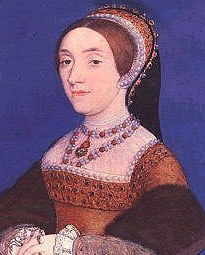
England-King 1491-1547 Henry-8-Tudor
- 28-Jul-1540 marriage-5 to Catherine Howard. Henry, age 50, was said to have been utterly smitten by the 18-yo Quene Catherine Howard.
-
Nevertheless, her propensity to entertain several lovers (5) caused HT to have her -- and the lovers -- beheaded. = Shukra-yuti-Ketu
EXAMPLE
Swing Time 1911-1995 dance theatre Ginger Rogers [rhythmic-protective Pūrvābhādra-4]
RULER Shani-8-nicha.[Bharani-Shani-yuti-Mangala-Aśvini] + [Bharani-Shani-yuti-Rahu-Bharani]
- GR married and divorced five times. Alliance-5-of-5 = executive cinema producer, William Marshall = Makara-5 entertainment.
- Nicha Shani directly or indirectly controls marriages 2, 3, and 5.
- According to GR's memoire, Marshall's volatile and secretive behaviors [8] doomed both the marriage and their prospective cinema production company [Makara, legal entities] . Still, Shani resists change.
- Although they separated in 1963 following less than two years of cohabitation, the pair remained Legally married for eight years 1961-1969 [GR age 50-58].

bhava-12 = LifeMate-6
isolation, respite, retreat, hospitalization, invisibility
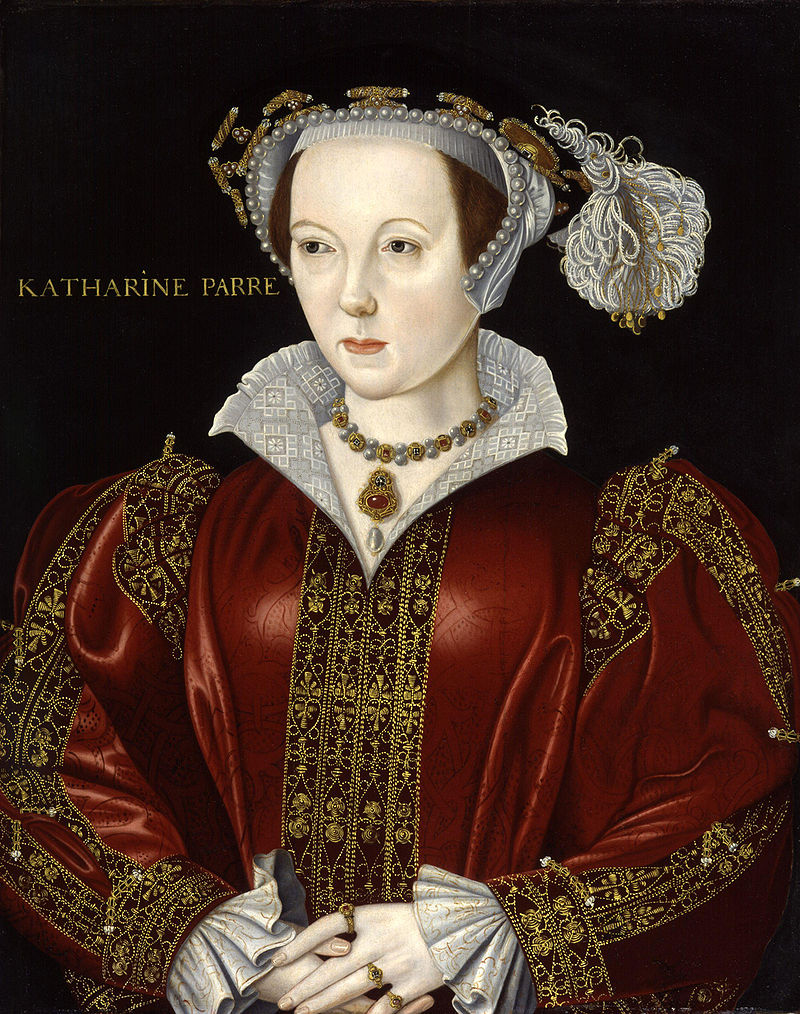
Katharine Paar (Parre) the 6th and final wife of England-King 1491-1547 Henry-VIII Tudor
EXAMPLE
England-King 1491-1547 Henry-8-Tudor
- 12-Jul-1543 (HT age 51) marriage-6-of-6 with Catherine Parr during his Mangala-Shani bhukti. Severely sick and enormously obese, Henry was unlikely to have been sexually active in the 6th-and-final union. He was largely confined to his rooms (12).
Although the union was brief, it was said to be companionable.
- Surya activates 12 and Surya activates 7th navamsha. Observers said that Henry would listen to his wife's opinion as he believed that she was his well-wisher and that she privately understood him.

Crater Lake, Oregon, USA
[How Readings Work] = [Sample Sacred Jewels Ratna Recommendation] = [Seva]
file update = 27-Nov-2025
 [Copyright © 1994-2024 by Barbara Pijan Lama] =
[Contact] =
[How to Request a Jyotishavidya Reading]
[Copyright © 1994-2024 by Barbara Pijan Lama] =
[Contact] =
[How to Request a Jyotishavidya Reading]
Barbara Pijan Lama Jyotishavidya Vedic Astrology Surya Sun Chandra Moon Mangala Mars Budha Mercury Guru Jupiter Shukra Venus Shani Saturn Rahu Ketu Graha Planets Dasha Timeline Calendar Nakshatra Navamsha Marriage Children Treasury Career Spiritual Wisdom Cycles of re-Death and re-Birth
The information on barbarapijan.com , including all readings and reports, is provided for educational purposes only. Wishing you every happiness and continuing success in studies!
May all beings venerate life as a state of deep spiritual intimacy.
" Love is always patient and kind; it is never jealous;
love is never boastful or conceited;
it is never rude or selfish;
it does not take offense, and is not resentful.
Love takes no pleasure in other people's sins but delights in the truth;
it is always ready to excuse, to trust, to hope, and to endure whatever comes.
Love does not come to an end."
~~ 1st Epistle to the Corinthians 13: 4-8 [Jerusalem Bible]

